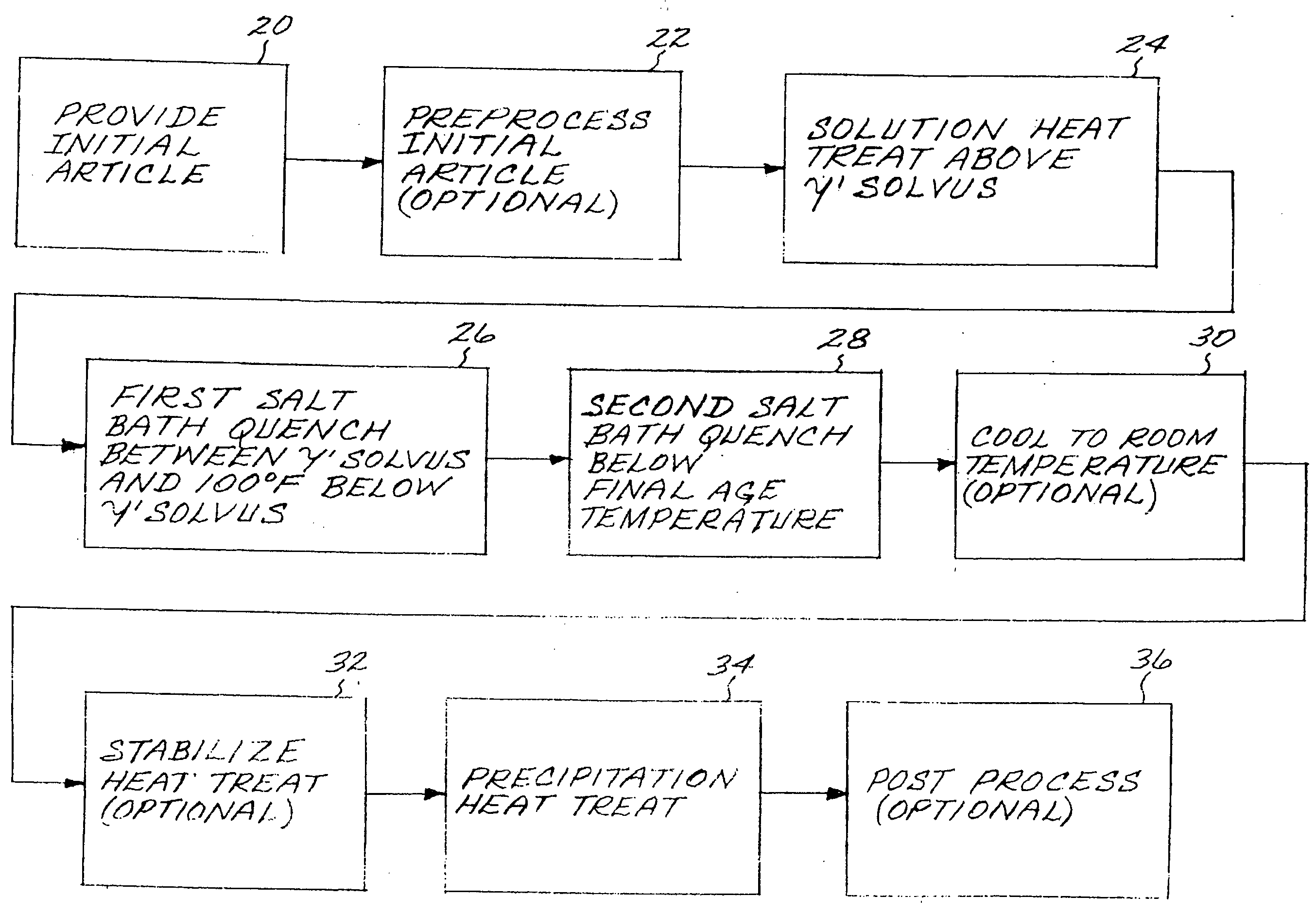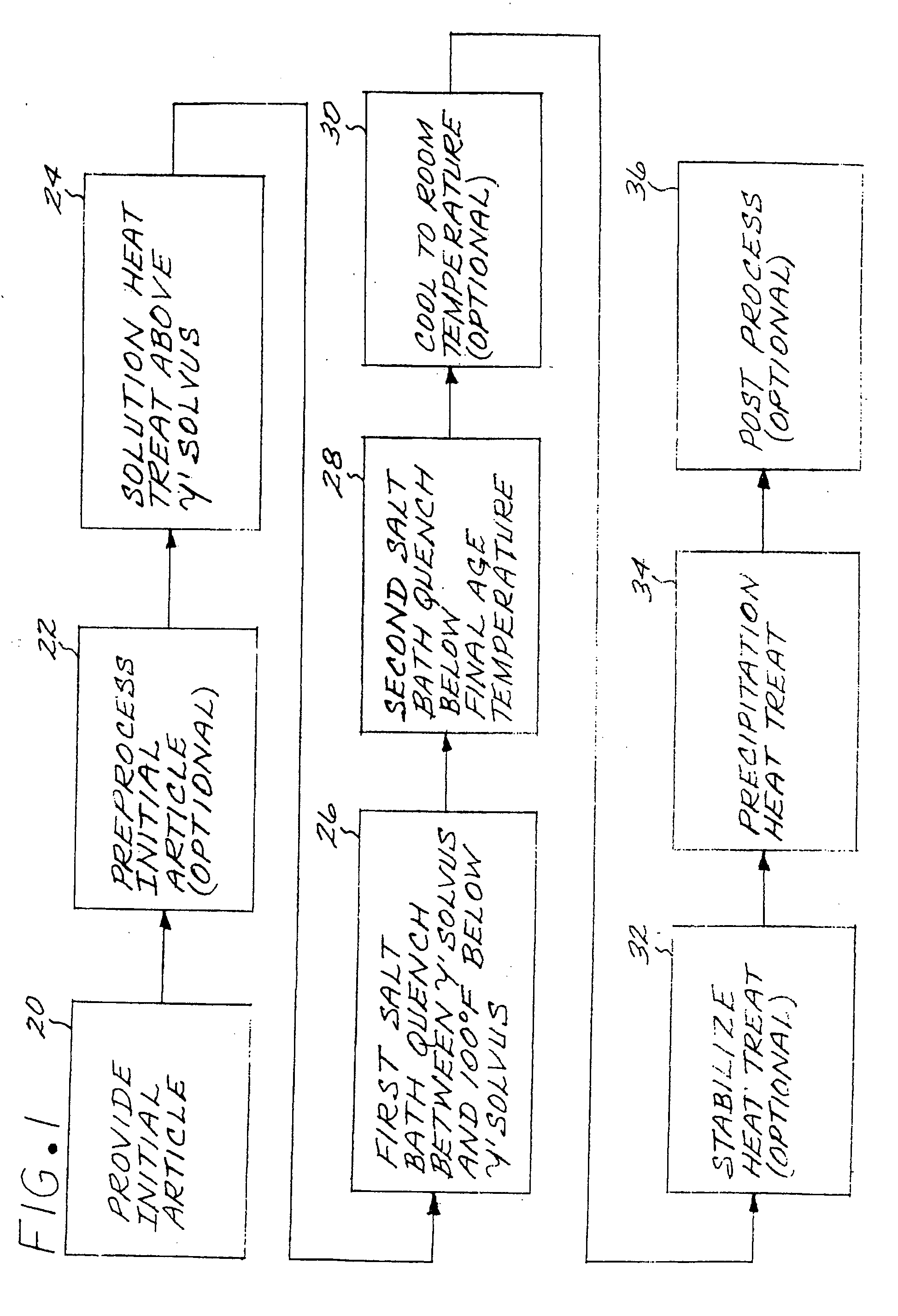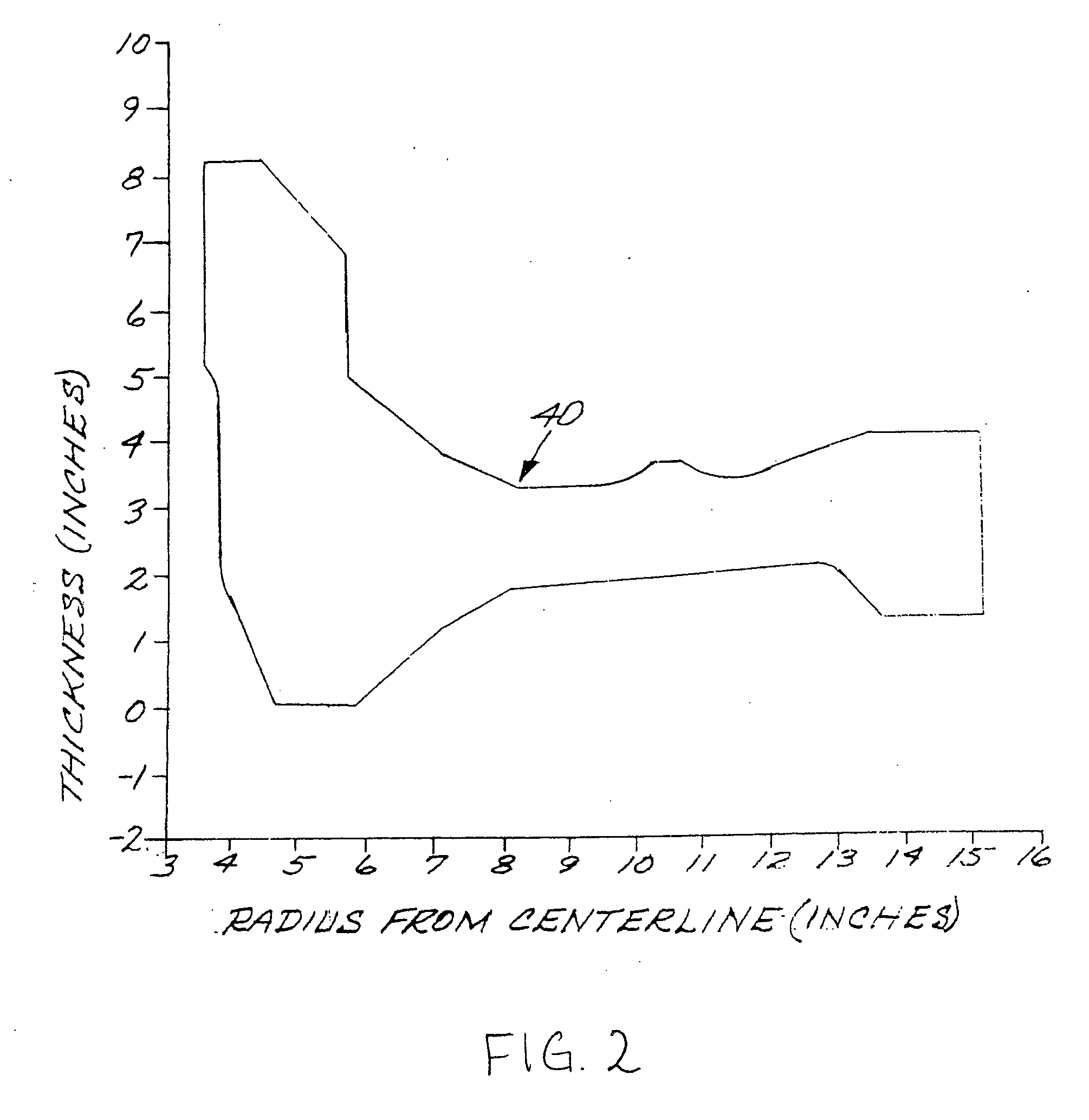Method for preparing a nickel-base superalloy article using a two-step salt quench
a salt quench and nickel-base technology, applied in the field of salt quench methods for nickel-base superalloy articles, to achieve the effects of high residual strains and stresses, high convective heat transfer coefficient, and relatively quick cooling of hot articles
- Summary
- Abstract
- Description
- Claims
- Application Information
AI Technical Summary
Benefits of technology
Problems solved by technology
Method used
Image
Examples
Embodiment Construction
[0021]FIG. 1 illustrates a method for preparing an article made of a nickel-base superalloy strengthened by the presence of gamma-prime (γ′) phase. The method includes first providing an initial article of the nickel-base superalloy, step 20. The initial article may be of any operable type. An example of interest is a disk 40, also termed a rotor, used in a gas turbine engine, as shown in sectional center-to-rim view in FIG. 2 with dimensions for a typical case. Preferably, the initial article, a gas turbine disk pancake or contoured blank, has a greatest thickness dimension through a section, in at least some portions of the article as shown in FIG. 2, of not less than about 3 inches. More preferably, a difference between a greatest section thickness and a smallest section thickness is at least about 2 inches. These dimensions and dimensional differences are found to otherwise produce significantly greater problems in the heat treating than smaller dimensions and dimensional differ...
PUM
| Property | Measurement | Unit |
|---|---|---|
| temperature | aaaaa | aaaaa |
| thickness | aaaaa | aaaaa |
| temperature | aaaaa | aaaaa |
Abstract
Description
Claims
Application Information
 Login to View More
Login to View More - R&D
- Intellectual Property
- Life Sciences
- Materials
- Tech Scout
- Unparalleled Data Quality
- Higher Quality Content
- 60% Fewer Hallucinations
Browse by: Latest US Patents, China's latest patents, Technical Efficacy Thesaurus, Application Domain, Technology Topic, Popular Technical Reports.
© 2025 PatSnap. All rights reserved.Legal|Privacy policy|Modern Slavery Act Transparency Statement|Sitemap|About US| Contact US: help@patsnap.com



